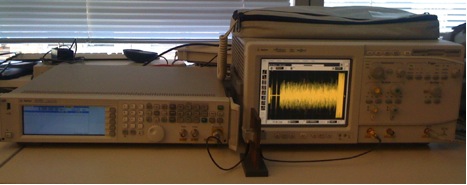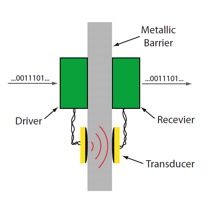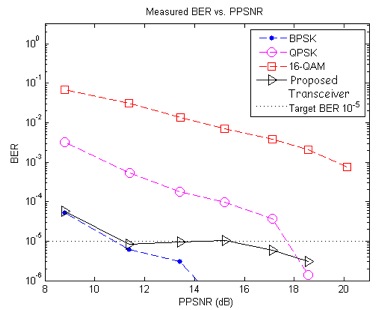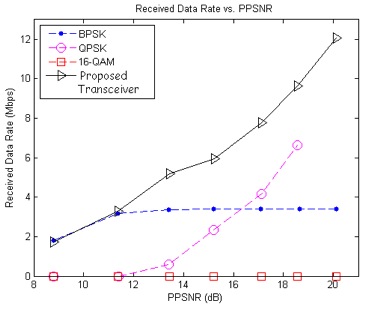Lab OFDM for Ultrasound
Various industrial control networks require data communication in environments where metallic structures restrict network connectivity. For instance, Navy ships making use of wireless control networks below decks require a means to pass signals from one compartment to anther. In some applications, the barrier can be penetrated with wiring, while applications involving structures such as pressurized pipelines, watertight bulkheads, armor plating, etc., make it undesirable to physically penetrate the structure. Ultrasonic wireless links have been proposed to overcome this problem by using through-metal data communication. However, the ultrasonic link experiences sound wave propagation latency. Further, its reverberant nature limits the communication bandwidth and therefore creates a bottleneck to network traffic. Narrowband approaches suffer from high ISI caused by signal echoing within the bulkhead. DWSL has developed a communications testbed that allows for prototyping and evaluating ultrasonic communications.

Using this testbed, a link-adaptive orthogonal frequency division multiplexing (OFDM) physical layer has been implemented, that offers improved reliability and performance. The adaptive OFDM technique mitigates the effects of severe frequency selective fading of the through-metal link and increases spectral efficiency through the exploitation of the ultrasonic channel’s slow-varying nature. Our experimental measurements demonstrate significant throughput improvement of up to 300% over other physical layer designs available in technical literature.


